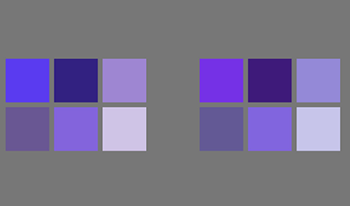
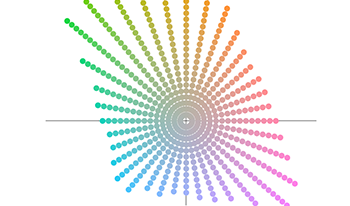
A new color space, IGPGTG, was developed. IGPGTG uses the same structure as IPT, an established hue-uniform color space utilized in gamut mapping applications. While IPT was fit to visual data on the perceived hue, IGPGTG was optimized based on evidence linking the peak wavelength of Gaussian-shaped light spectra to their perceived hues. The performance of IGPGTG on perceived hue data was compared to the performance of other established color spaces. Additionally, an experiment was run to directly compare the hue linearity of IGPGTG with those of other color spaces by using Case V of Thurstone’s law of comparative judgment to generate hue-linearity scales. IGPGTG performed well in this experiment but poorly on extant visual data. The mixed results indicate that it is possible to derive a moderately hue-linear color space without visual data.
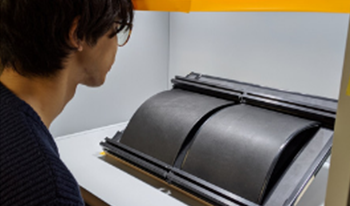
Products can be promoted by improving their value using shitsukan, that is, feelings or impressions of the perception of their material appearance. Particularly, products made of leather are generally attractive to consumers. Although the number of products made from artificial leather has been increasing in recent years, the impression of their appearance is different from that of products made of genuine leather. This study investigates the impression elicited by leather and proposes a model to assess people’s feeling of its authenticity. We developed a measurement system and conducted subjective evaluation experiments on two groups of participants divided according to whether they were familiar with leather. The proposed evaluation model is based on a visual perception mechanism. We first investigated the correlation between characteristics of image samples and impression factors estimated by using factor analysis. Then, we confirmed the correlation among the impression factors and values of the feeling of authenticity. The R-squared value between subjective values of the feeling of authenticity and our proposed assessment values was approximately 0.8.
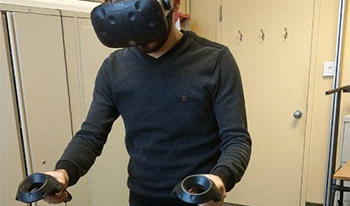
The sense of presence is defined as a subjective feeling of being situated in an environment and occupying a location therein. The sense of presence is a defining feature of virtual environments. In two experiments, we aimed at investigating the relative contribution of motion parallax and stereopsis to the sense of presence, using two versions of the classic pit room paradigm in virtual reality. In Experiment 1, participants were asked to cross a deep abyss between two platforms on a narrow plank. Participants completed the task under three experimental conditions: (1) when the lateral component of motion parallax was disabled, (2) when stereopsis was disabled, and (3) when both stereopsis and motion parallax were available. As a subjective measure of presence, participants completed a presence questionnaire after each condition. Additionally, electrodermal activity (EDA) was recorded as a measure of anxiety. In Experiment 1, EDA responses were significantly higher with restricted motion parallax as compared to the other two conditions. However, no difference was observed in terms of the subjective presence scores across the three conditions. To test whether these results were due to the nature of the environment, participants in Experiment 2 experienced a slightly less stressful environment, where they were asked to stand on a ledge and drop virtual balls to specified targets into the abyss. The same experimental manipulations were used as in Experiment 1. Again, the EDA responses were significantly higher when motion parallax was impaired as compared to when stereopsis was disabled. The results of the presence questionnaire revealed a reduced sense of presence with impaired motion parallax compared to the normal viewing condition. Across the two experiments, our results unexpectedly demonstrate that presence in the virtual environments is not necessarily linked to EDA responses elicited by affective situations as has been implied by earlier studies.
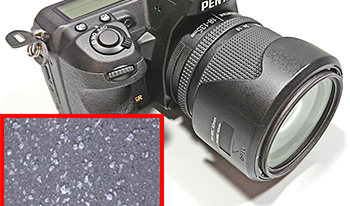
In this article, the authors study the relationships between the principal impressions of crinkle-finished surfaces, which are found on camera exteriors, and the characteristics of test images of crinkle-finished surfaces. They extracted impression words for the surfaces through subjective experiments with humans. The results suggest that the impression is affected by five factors: two physical impression factors and three emotional impression factors. The surface images were obtained using a multi-angle measurement system that was built to collect images under various conditions. The authors used stepwise multiple regression to derive equations to predict the impressions of the surface given the characteristics of its test images. The results of the equations are highly correlated with the subjective scores of the five impression factors. These models will enable designers to design attractive crinkle-finished surfaces and camera exteriors.